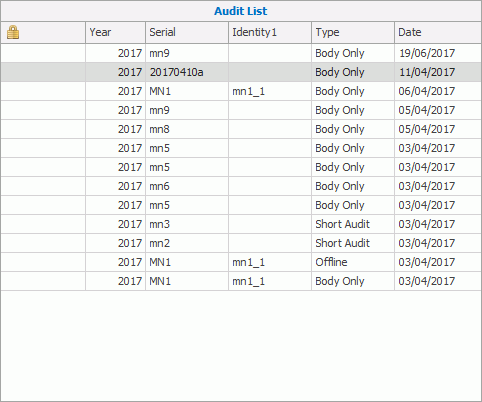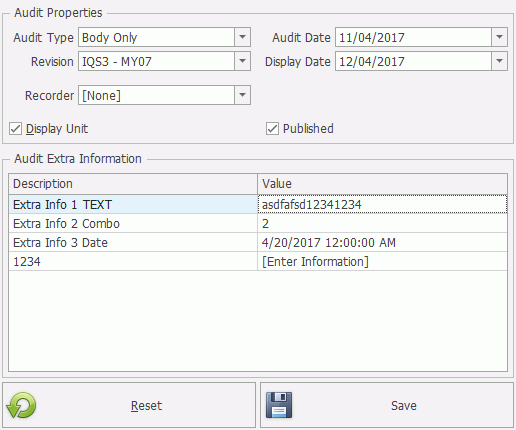When are Audits Performed?
Data Collect can be used to carry out audits to evaluate a finished product prior to delivery, with the same level of detail as a customer would do. The goal is to find those problems that have not been detected during the normal production process so that it can be addressed within the facility and minimize warranty claims.
Operators can review quality concerns for a part (including the type and the severity of concern) and then re-evaluate the concern as required.
Audits are generally carried out on a limited number of production units in each shift. The exact units that are going to be audited are usually selected at random by an external system.
An audit can be carried out at any point of the production process but is most frequently performed when the unit is complete and ready for dispatch. At this point it's possible to review how many defects would have made it to the customer without the review and it also acts as a safeguard for catching any defects that may have been created in the very last steps of production.
As well as reviewing and modifying the defects created in Data Collect, the operator is also able to record further information. There is a separate defect severity level and the operator can even state how much of an impact on the customer the defect is likely to have.
When a station is in Audit mode its Create Tracking Pass property will always work as Insert pass only if none exists.
Creating and Using Audits
In order to correctly carry out an audit there are a few steps that must be carried out in other programs before and after:
Form Composer: Create the user interfaces that will be presented to the operator. See Form Composer Overview.
Cockpit: Create and configure the different possible types of audit. See Audit Configuration Overview.
Cockpit: Setup a station, inspection steps, views, products and parts. See Cockpit overview.
Cockpit: Enable the Audit mode property for the station. See the Data Collect station settings.
You can then carry out the audit in Data Collect. Once the audits have been performed they can be reviewed and published.
Cockpit: Publish audits. See Publishing Audits.
ATS ARS: Generate reports for audit information. See ATS ARS documentation.
How To Carry Out an Audit
An audit can be carried out as follows:
Log into your auditing station.
Select a production unit to audit by searching for its serial or ID number. Alternatively you can select an existing audit from the Audit List control in the main screen.

If you searched for a unit and audits have already been performed on the selected unit then the Select Audit form will open. You can then either select an existing audit from the list to modify it or click Create Audit.
If audits haven't been performed on the selected unit then the Create Audit form will open.
Enter the required audit details and click OK.
The audit is created.
Enter any extra information required in the Audit Information control in the Main screen.

Enter any defects that are found and assign to the appropriate responsible area. Defects can be entered and repaired in the same way as with a standard Data Collect station.
When a station is in Audit mode you will only be able to see the defects of the currently selected audit. If defects have been added to the same production unit in another audit or during standard data collection they will not be shown. When a station isn't in Audit mode it will display all defects no matter how they've been added.
Once the details and defects for the audit have been entered you must save the audit by clicking the Commit button (![]() ).
).
Once the audit has been committed it can be reviewed further and then released for analysis by publishing it in the reporting application.